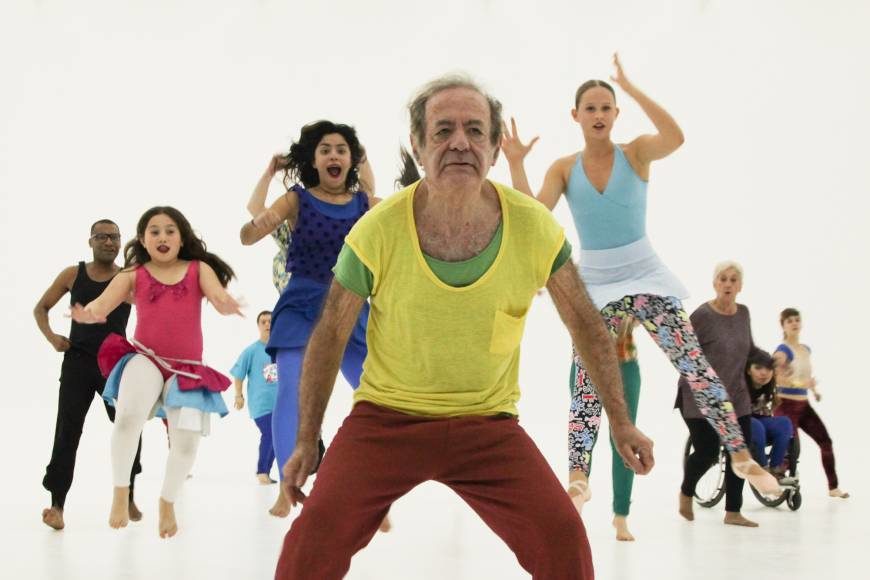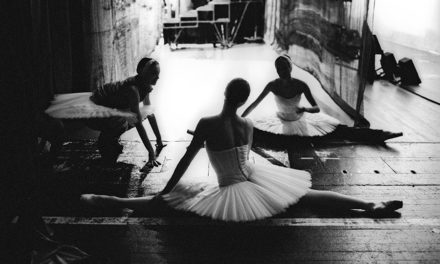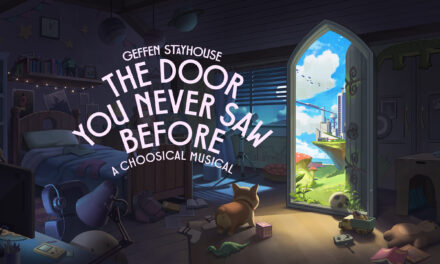Is the French choreographer Jerome Bel a trailblazer or an enfant terrible of the contemporary dance world?
This weekend you’ll be able to judge for yourself when his challenging but spellbinding “Gala” arrives at Saitama Arts Theater— and your verdict will likely depend on whether you believe contemporary dance is a distinctive art form executed by specially trained people, or whether it can be any kind of performance in which the body is used for creative expression on stage.
The Paris-based artist explained the thinking behind his work in a recent email interview with The Japan Times:
“I gave free workshops for amateurs in Saint-Denis (a poverty-stricken Paris suburb), and then I had the idea of making a ‘professional’ show with them because I was fascinated by their energy and their freedom,” he said. “They have a very different attitude from professionals toward dance; they just don’t care, they simply want to enjoy it, and I thought that was absolutely awesome.
“What has always interested me about amateurs is their fragility,” the 53-year-old added, “the fact that, unlike professionals who become masters of their chosen art forms, amateurs are just so open.”
Bel recalls first encountering contemporary dance in 1983 through works by the famed Belgian choreographer Anne Teresa De Keersmaeker and the late, great German dance icon Pina Bausch, which he saw at the Avignon Festival just up the road from his hometown of Montpellier in southern France. Afterward, he studied dance at the Centre Choregraphique National in the northwestern city of Angers before going on to perform with troupes in France and Italy.
Finally, in 1994, Bel made his sensational debut as a choreographer with “Nom donne par l’auteur” (“Name given by the author”), in which he and Frederic Seguette, who also studied in Angers, “merely” interacted with 10 objects as diverse as a hair dryer, a dictionary, a vacuum cleaner and a ball— without a single jump or other conventional dance move figuring in the acclaimed hour-long show.
The next year, he followed that with the eponymous “Jerome Bel,” in which two men, including himself, and two women — all of them naked — interacted with their bodies, exploring them together as if they were curious, unfamiliar objects.
Back then, perhaps at a loss for descriptors, critics coined the term “non-dance” for Bel’s innovative work, which stood out in stark contrast from other works of the time even in the realm of contemporary dance, a form renowned for its lack of limitations.
Reflecting on that period in a 2005 interview, Bel said that, having studied the works of new-wave structuralist philosophers such as Roland Barthes, Michel Foucault, and Marcel Duchamp, he realized, “Obviously, the question is what do we do and… what’s the purpose of theater?”
Then, answering that question, he said he made up his mind to depart from “dance’s elitism of showing off skills amid grand stage sets.” Instead, he said, “We decided to address things that affect everyone.”
In light of this, it’s hardly surprising that Bel’s resume features one conceptually challenging experimental piece after another.
For instance, in his most iconic work, 2001’s “The Show Must Go On,” a mixed cast of about 20 professional and amateur dancers perform their own heartfelt and/or bizarre moves to pop songs such as David Bowie’s “Let’s Dance,” sometimes singing or shouting as they move to music only they can hear on their earphones.
This time, though, audiences here will be treated to a new Japanese version of “Gala,” which has already been staged in more than 50 cities in 20-plus countries since its 2015 premiere. To create this unique work, Bel has enlisted 16 amateurs and four professional dancers— both young and old, Japanese along with others from China and Senegal — to perform entirely as they want to on stage, sometimes alone, sometimes not.
From among that motley lineup, during a break in rehearsals, The Japan Times fell into conversation with Saitama residents Bibiy Gerodelle and Kei Yoshimura— a gorgeous purple-haired Japanese drag queen and a recently retired salaryman, respectively.
As he prepared to enter what for him is an entirely new world of dance, Yoshimura’s excitement was palpable.
“Since I retired I’ve tried acting and choral singing, but teachers always guided us,” he said. “With this, however, I was just told to think about my movement by myself. I was confused at first, but then I realized it’s so enjoyable to dance without any instructions.
“Now I really wish the public sector and politicians would promote more projects and open doors for everyone because many people never have a chance to get involved with anything artistic.”
Though Gerodelle is already a professional entertainer, he was also brimming with excitement about “Gala.”
“Without this project, I would probably never be able to experience dancing entirely freely on stage,” he said. “I’m really enjoying the rehearsals and it’s a great fun.
“While I want to present my profession to audiences who may have never seen a drag queen act, I also want to make them laugh a lot and I may do some unexpected things to get others fazed,” he added with a laugh.
As for the creator behind all this, Bel said simply, “I try to let people express themselves with their own tools and imaginations.”
Then, as befits his aversion to elitism, he concluded by saying: “A project consists of trying and exploring, rather than controlling or mastering, even if it means failing. As Samuel Beckett said: ‘Try again. Fail again. Fail better.’”
“Gala” runs Jan. 20 & 21 at 3 p.m. at Saitama Arts Theater near Yonohonmachi Station, on the Saikyo Line from Shinjuku or Ikebukuro stations in Tokyo. For further details, call 0570-064-939 or visit www.saf.or.jp.
This post originally appeared on The Japan Times on January 17, 2018 and has been reposted with permission.
This post was written by the author in their personal capacity.The opinions expressed in this article are the author’s own and do not reflect the view of The Theatre Times, their staff or collaborators.
This post was written by Nobuko Tanaka.
The views expressed here belong to the author and do not necessarily reflect our views and opinions.


















